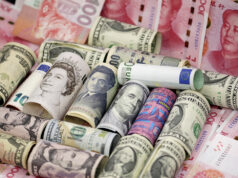Peso drops on risk-off sentiment after attack on Saudi oil facilities
THE PESO weakened against the dollar as investors flocked to safe havens after an attack on Saudi Arabia’s oil facilities drove up crude prices and worsened tensions between the United States and Iran.
On Monday, the local unit returned to the P52-per-dollar level as it closed at P52.28, down, crashing by 37 centavos from its P51.91 finish on Friday.
The peso started the trading session at sharply weaker P52.15 against the dollar. It failed to gain any ground against the greenback, with its intraday high at just P52.13. Meanwhile, it sank to as low as P52.36 versus the dollar.
Dollars traded on Monday jumped to $1.325 billion versus the $1.172 billion recorded on Friday.
One trader attributed the peso’s weaker performance for the day to better-than-expected US data released over the weekend, coupled with geopolitical tensions in the Middle East.
“The black swan event in the attack towards the oil facility in Saudi Arabia triggered a risk-off tone all throughout the day,” the trader said.
A black swan event refers to an event that comes as a surprise which triggers a major effect in markets.
A second trader shared the same sentiment, saying the attack on the Saudi Arabia oil facility dragged the peso’s performance for the day.
“Emerging market currencies are sensitive to risk appetite of investors. Investors would want to opt for safe haven currencies such as the yen and swiss [at times like this],” the second trader explained.
Oil prices soared with Brent crude posting its biggest intraday percentage gain since the Gulf War in 1991, after an attack on Saudi Aramco’s crude processing sites on Saturday shut about 5% of global supply.
Saudi Aramco has assured some clients that vessel loading has resumed following disruptions caused by the weekend’s attacks on Saudi oil facilities, two sources who received the notice told Reuters.
“Emerging Asian currencies most at risk to higher oil prices belong to countries with the largest oil trade deficits. They are the South Korean won, the Thai baht and the Indian rupee,” a DBS note said.
The Indian rupee was the worst hit by the surge in oil prices, weakening 0.9%, while the Indonesian rupiah shed 0.6%, its biggest intraday percentage drop since Aug. 6.
Investors now await the US Federal Reserve rate decision expected later this week with the market expecting a rate cut for the second meeting in a row.
The first trader said the result of the Fed meeting will guide sentiment moving forward and sees the local unit to moving around the P52.10-P52.50 band versus the dollar today.
Meanwhile, the second trader expects the peso to play within the P52.10-P52.40 range. — L.W.T. Noble with Reuters



